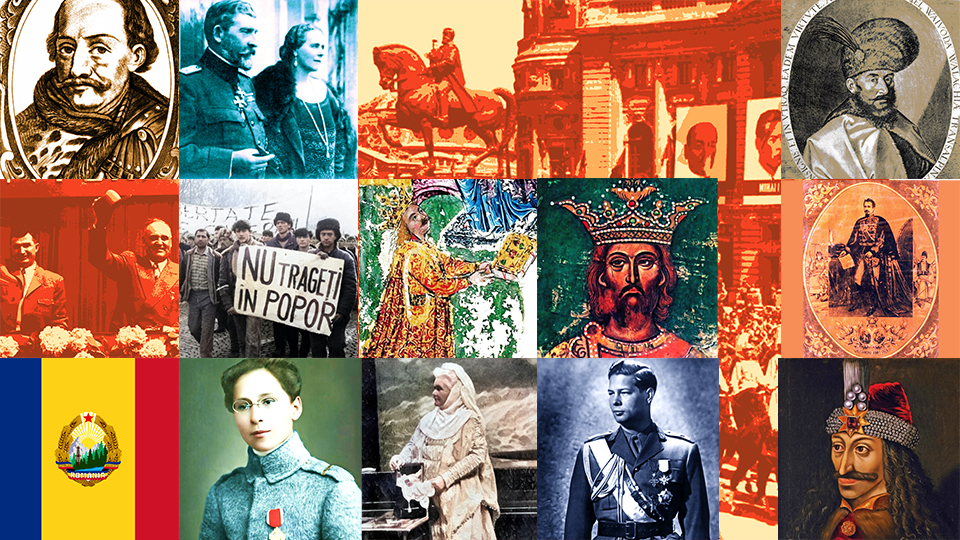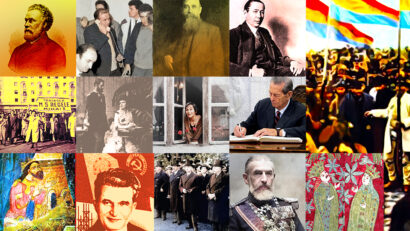General Gheorghe Avramescu
General Gheorghe Avramescu's death in 1945 still shrouded in mystery

Radio România Internațional, 31.03.2025, 14:00
The Romanian army throughout its history had generals who, with conspicuous gallantry, participated in the large-scale conflicts Romania was involved in, in the 20th century: two world wars and several other small-scale conflicts: the Balkan wars and the Romanian-Hungarian War of 1919.
Gheorghe Avramescu was one such general, a member of an exceptional generation of servicemen and one of the most talented generals Romania ever had in the 20th century.
General Avramescu was born in Botosani, north-western Romania, in 1884. He died in Jaszbereny, Hungary, in 1945. In 1913 Avramescu was a young officer. He took part in Romanian army’s campaign in Bulgaria during the Second Balkan War.
In 1916, when Romania entered World War One, in the Dobrogea battle, in the south-east, Avramescu proved himself as a company commander and was wounded in action. When he recovered, Avramescu returned to the frontline, distinguishing himself during the bloody battle of Marasesti, in 1917, when his unit put up a successful resistance against the violent German offensive.
He was decorated and promoted to a superior military rank. After the war, he graduated from the Superior School of War and was co-opted in the army’s upper hierarchy. In turn, Avramescu was head of an intelligence bureau, a division Chief of Staff, a regiment commander, head of a transport section, a brigade commander and the commander of a division.
In 1941, when Romania entered the Second World War, Avramescu was promoted to the rank of general. He was also appointed commander of the mountain corps. General Avramescu fought for the liberation of Bessarabia and Northern Bukovina, also taking part in the Eastern campaign in then the USSR. In the summer of 1944 Avramescu was the commander of the 4th Romanian army.
After August 23rd, 1944 Avramescu was still an army commander, fighting alongside the Soviet Union in the western campaign. However, in March 1945, general Avramescu is killed in a Germain air bombing action in Hungary, according to a press release of then the Soviet Army.
During World War Two, general Constantin Latea was a member of the General Staff. He came off safe from the encirclement south of Stalingrad in 1943 and had returned to Romania. In 1966, in an interview to Radio Romania’s Oral History Centre, General Constantin Latea reminisced the circumstances of General Avramescu’s disappearance in 1945.
”At one point, rumour has it that Avramescu would return to the country since it was planned for him to be offered an important political position, they dropped the hint he was going to be the prime minister. That was the guise of it all. And he had to relinquish the command of the army and leave for Bucharest, where they had this job for him.
Along the way, his visit was scheduled, to the commander of the 40th soviet Army to which the 4th Romanian army was subordinated, and he was supposed to extend his thanks for the cooperation. And there it is, the convoy departing from the 4th Army, with Avramescu, with Mrs Avramescu, with Avramescu’s daughter, with Avramescu’s grandson, with the interpreter, with Bombonel Negoiescu, a command officer.
There, at the headquarters of the 40th Soviet army, according to some, here is exactly what happened: the convoy stopped at the command post and Avramescu went there to bid his farewell. After about a quarter of an hour, a major came, who invited the ladies to have a cup of tea since the visit took a little longer and it was cold outside. After that, the officers were also called in and invited to a cup of tea.
No sooner they entered there than they were seized by some NKVD officers who had each of them go through a separate door and nobody knew anything about them ever since. And they also grabbed the drivers and the accompanying guard, all of them. Three days later Avramescu’s daughter hanged herself and Avramescu no longer returned to Bucharest.”
Even though the belief was feasible, whereby general Avramescu had been executed by the Soviets, in 1996 general Constantin Lățea said Avramescu’s disappearance was a mystery for a couple of reasons.
”What happened to Avramescu afterwards remains a mystery. There was a time when Avramescu was granted a merit-based pension as the result of a certificate signed by the Soviet general Rodion Malinovski, where it was specified that ‘General Avramescu died during an air raid of the command post and he was a man who did his duty.’ So Mrs Avramescu’s merit-based pension was based on this certificate, and that, officially, explained Avramescu’s disappearance.
The others, save for Felicia Avramescu, who hanged herself, were taken to the Soviet Union. I received a photograph where a tomb was marked with an ink cross, in a graveyard in Budapest : ‘ this is General Avramescu’s grave‘. No Romanian had seen him dead. Under normal circumstances, the dead body should have been handed to the Romanian army.”
General Gheorghe Avramescu shared the fate of Romanian servicemen who were killed in action during World War Two. Notwithstanding, for Romania, the political aftermath of the war turned General Avramescu’s case into a representative one for the hundreds of thousands of Romanian servicemen who had been going through similar tragedies during the war.






























